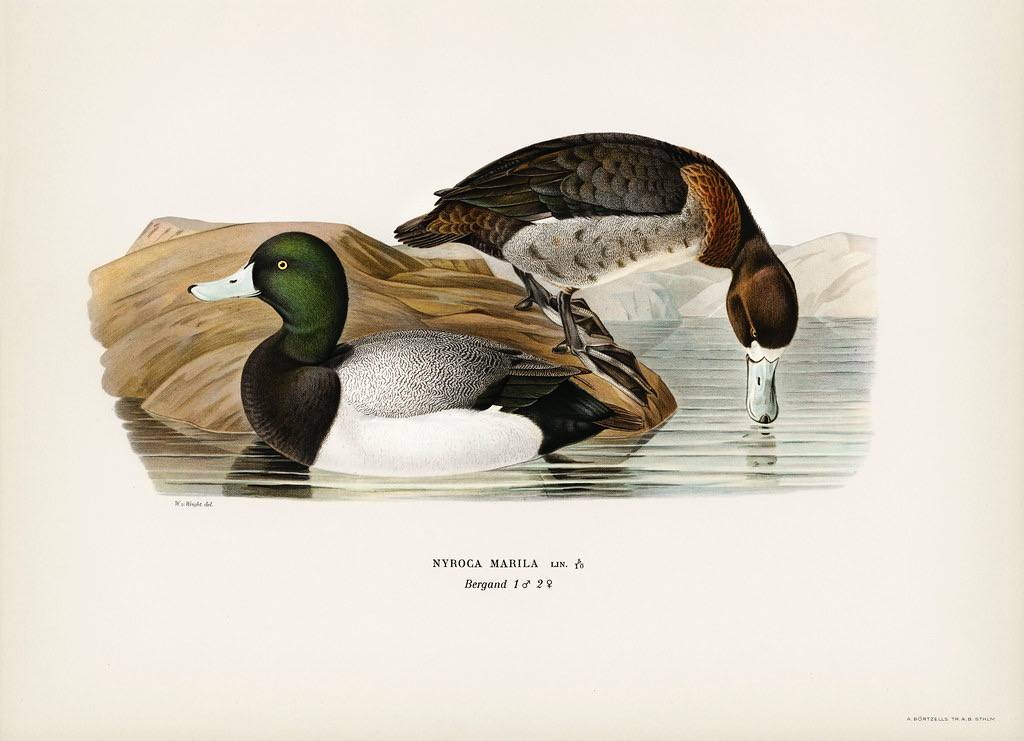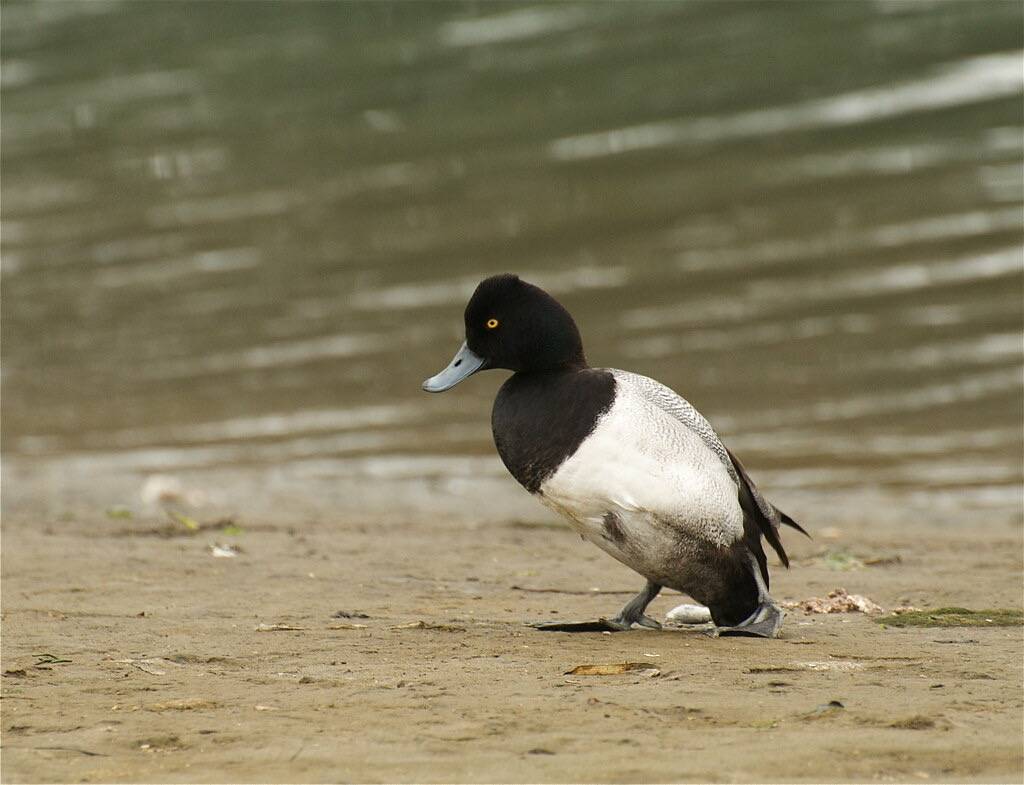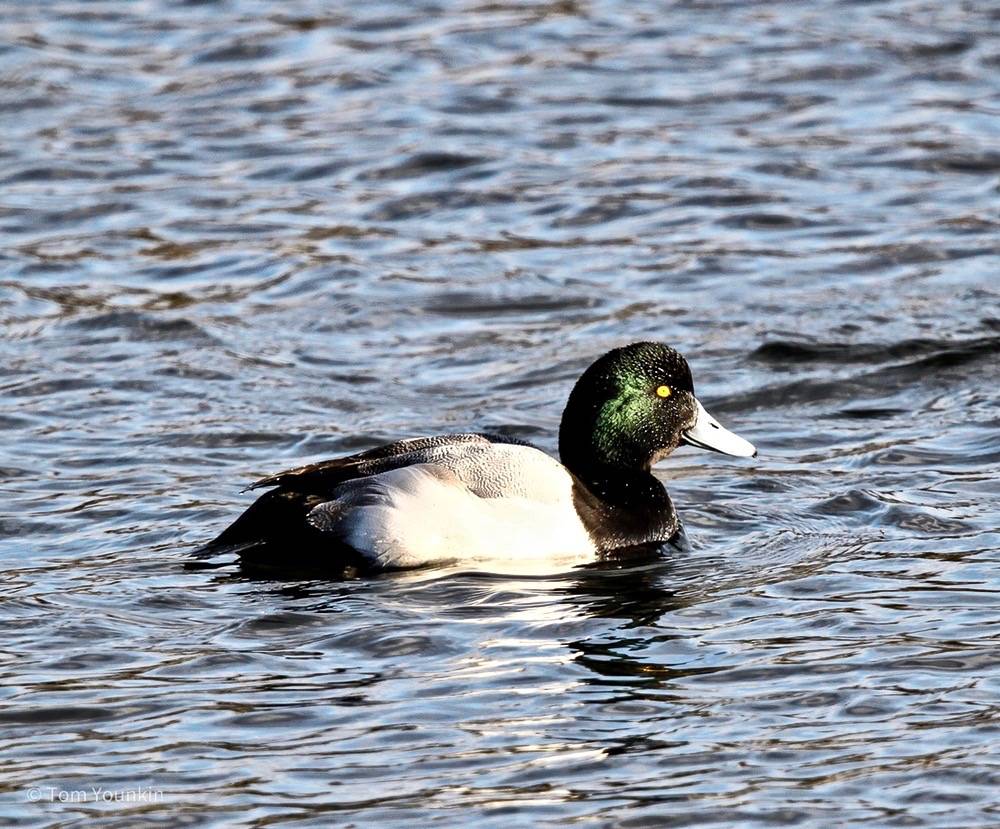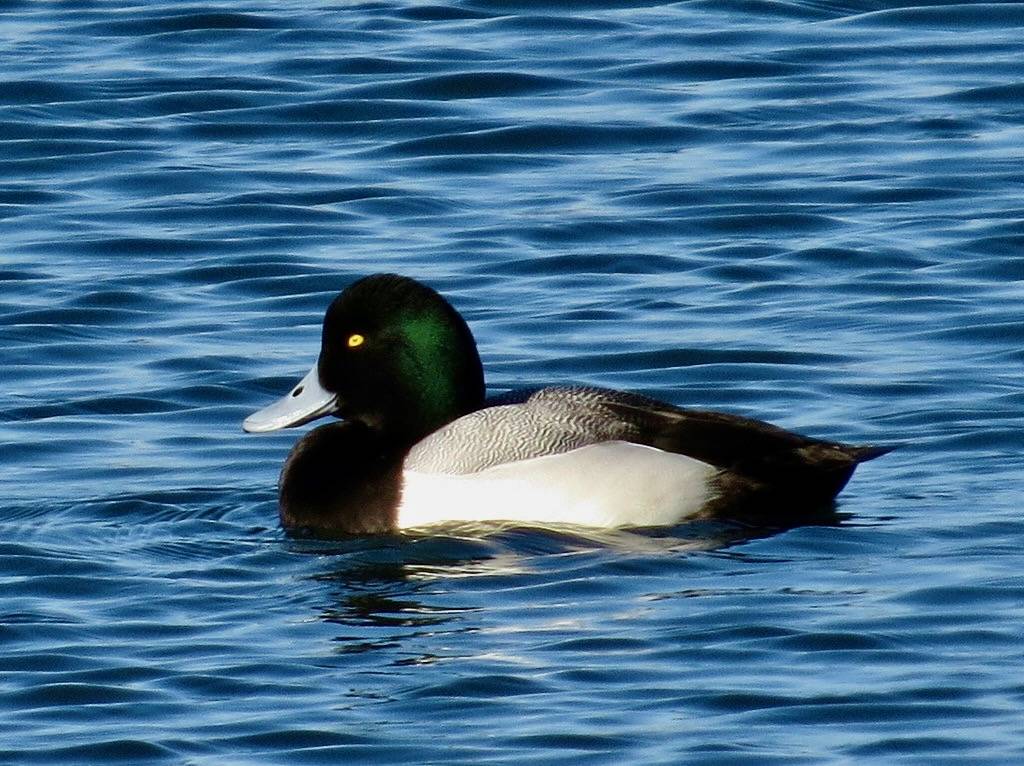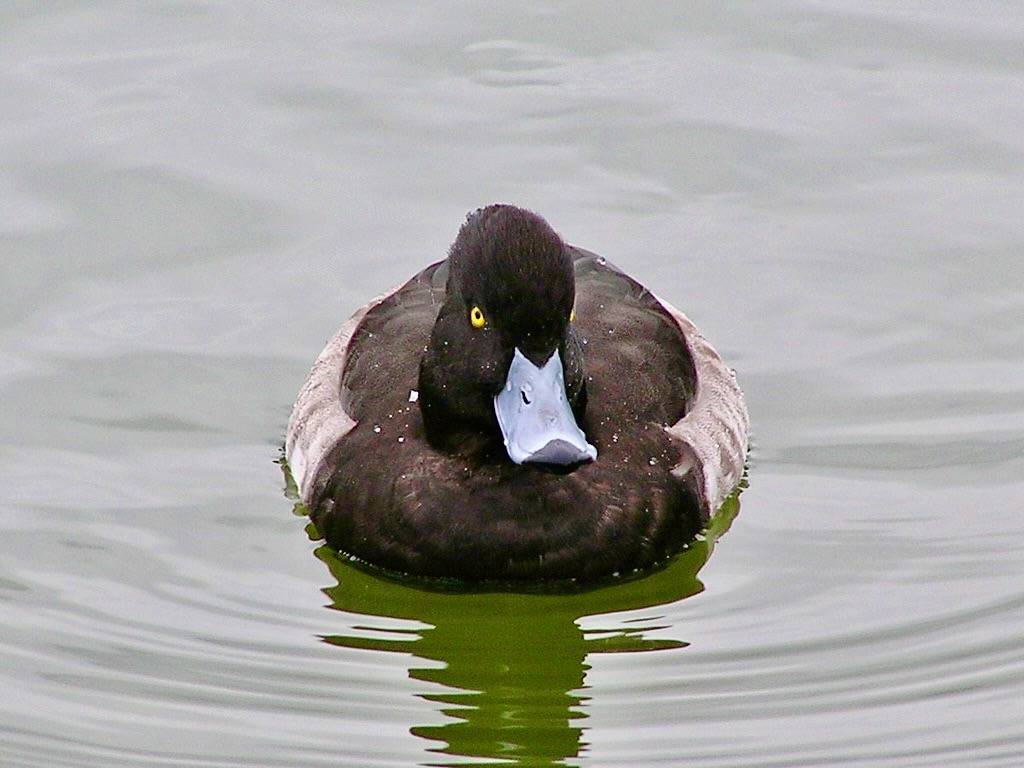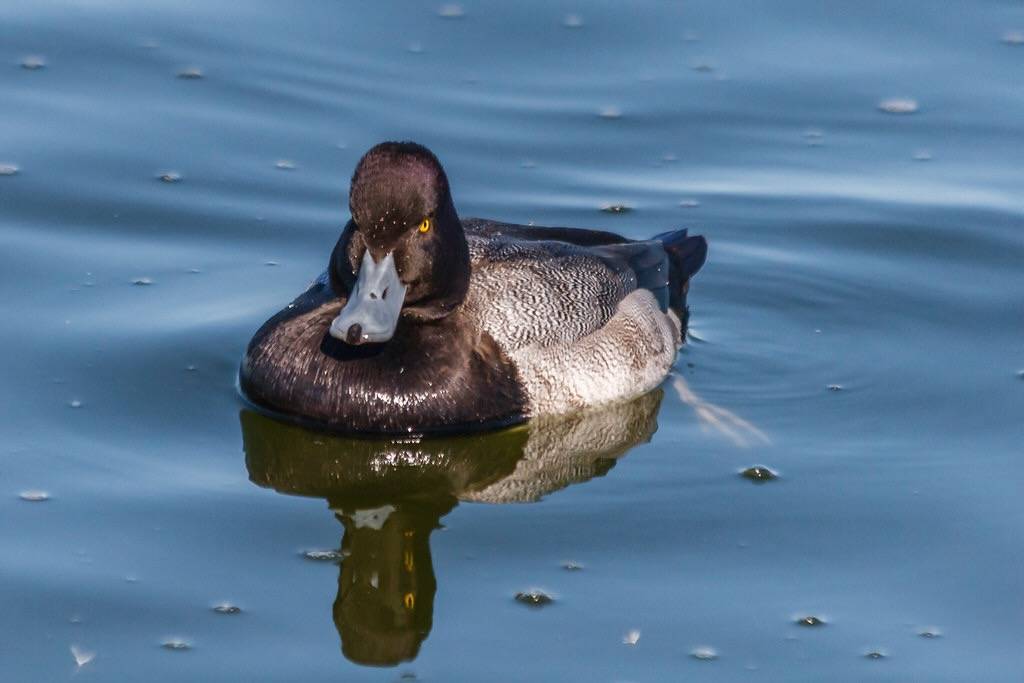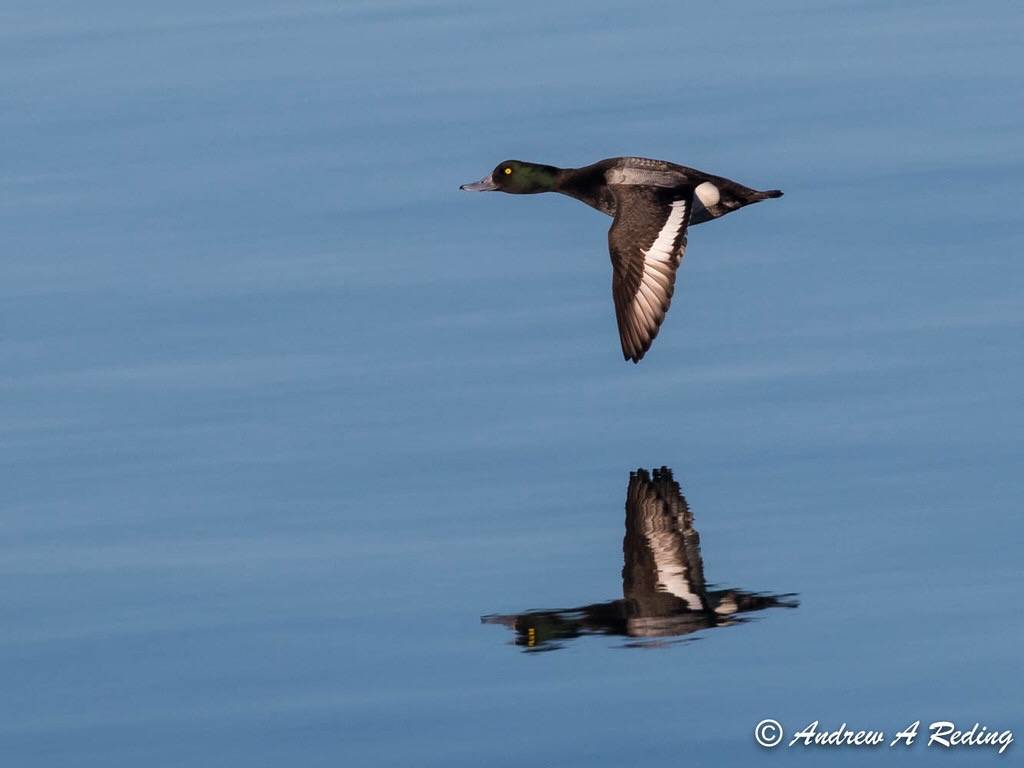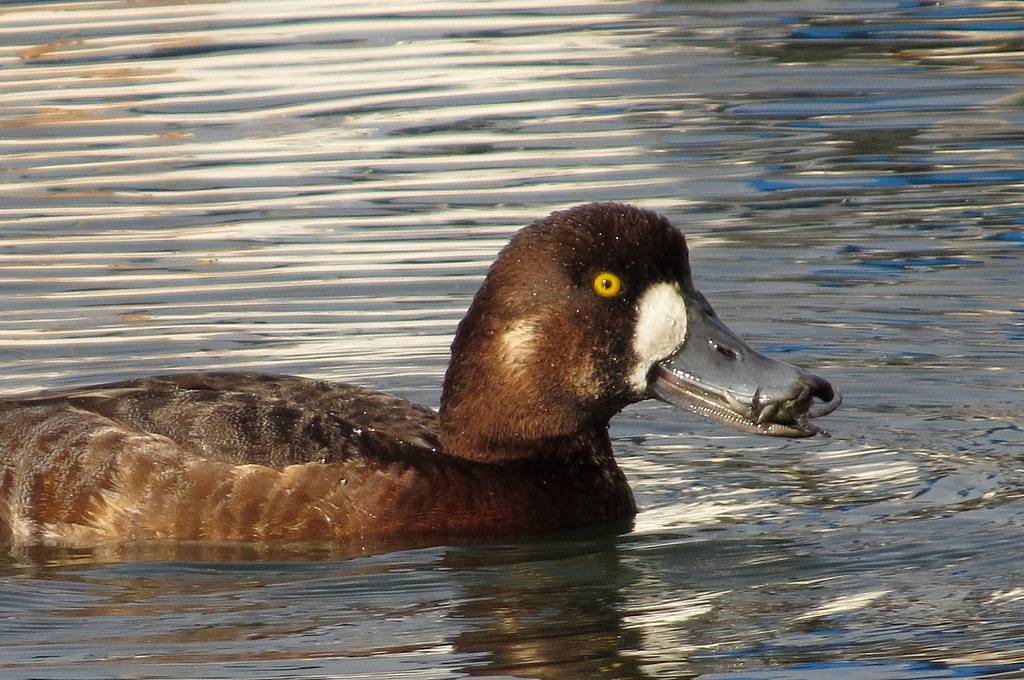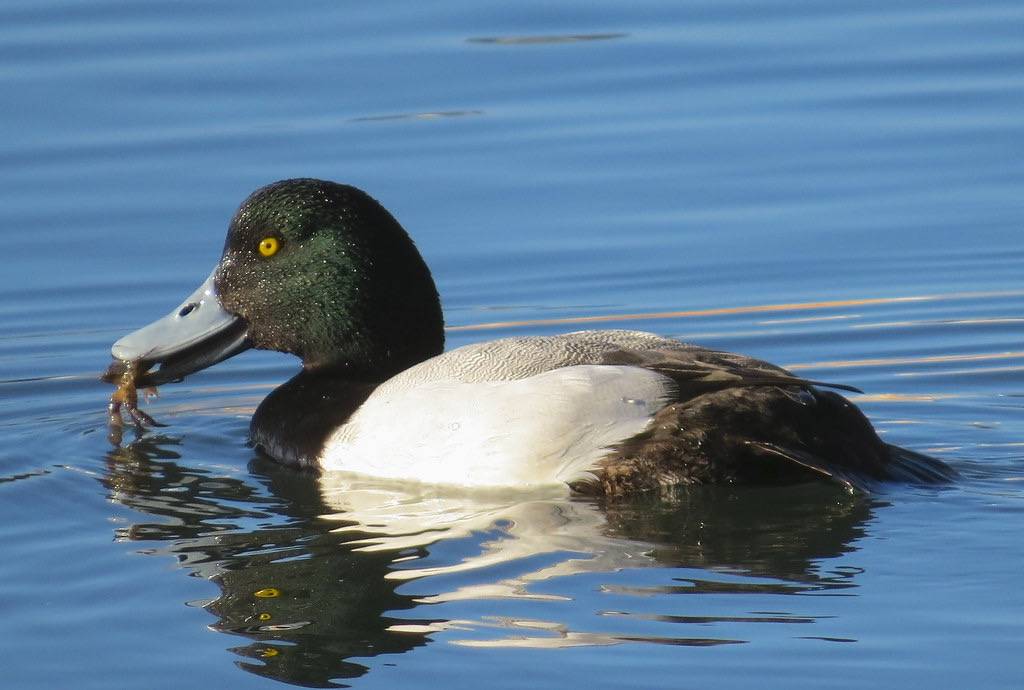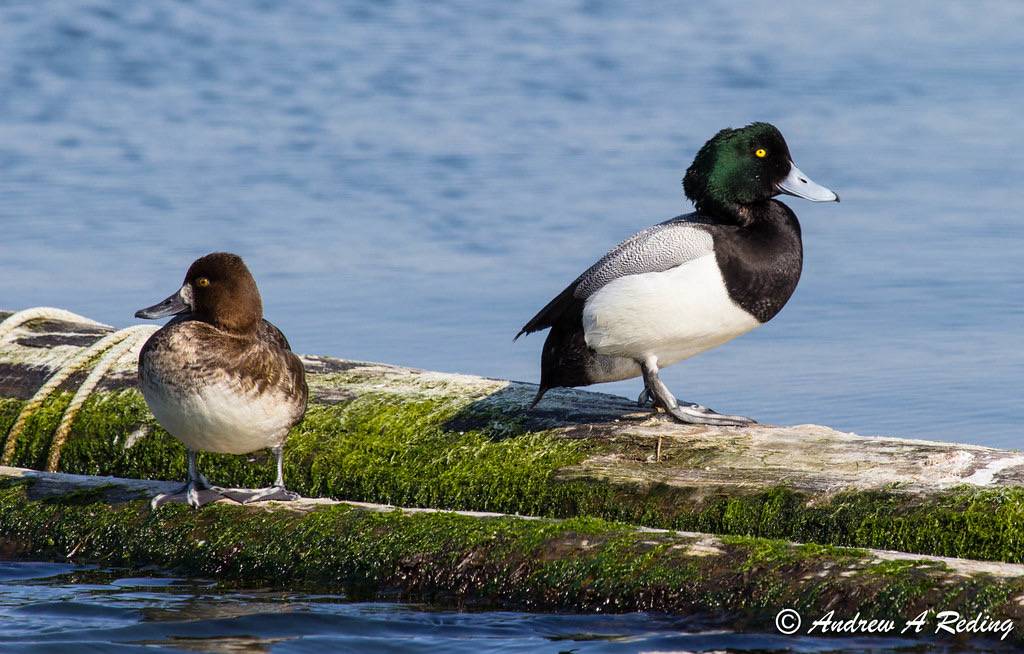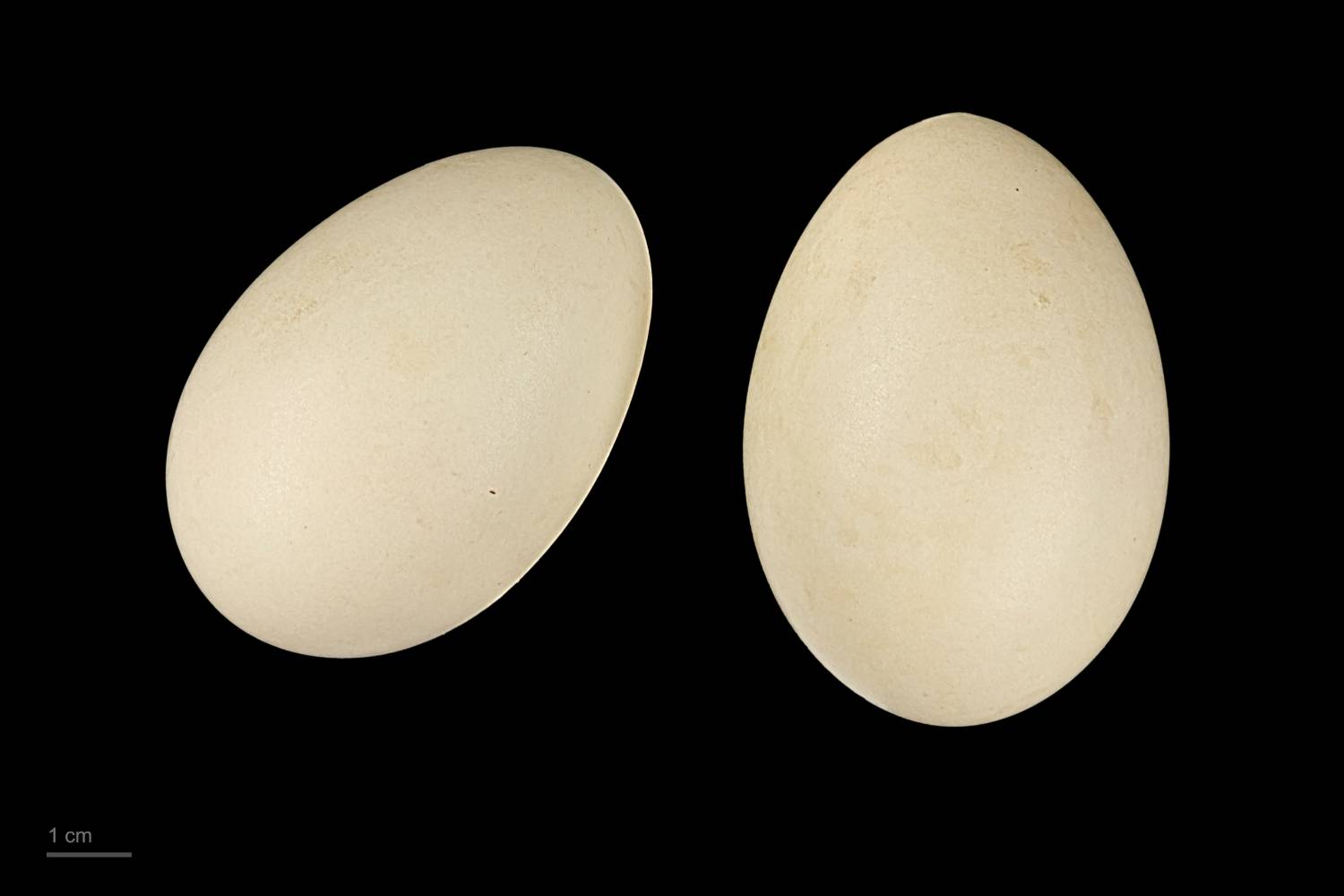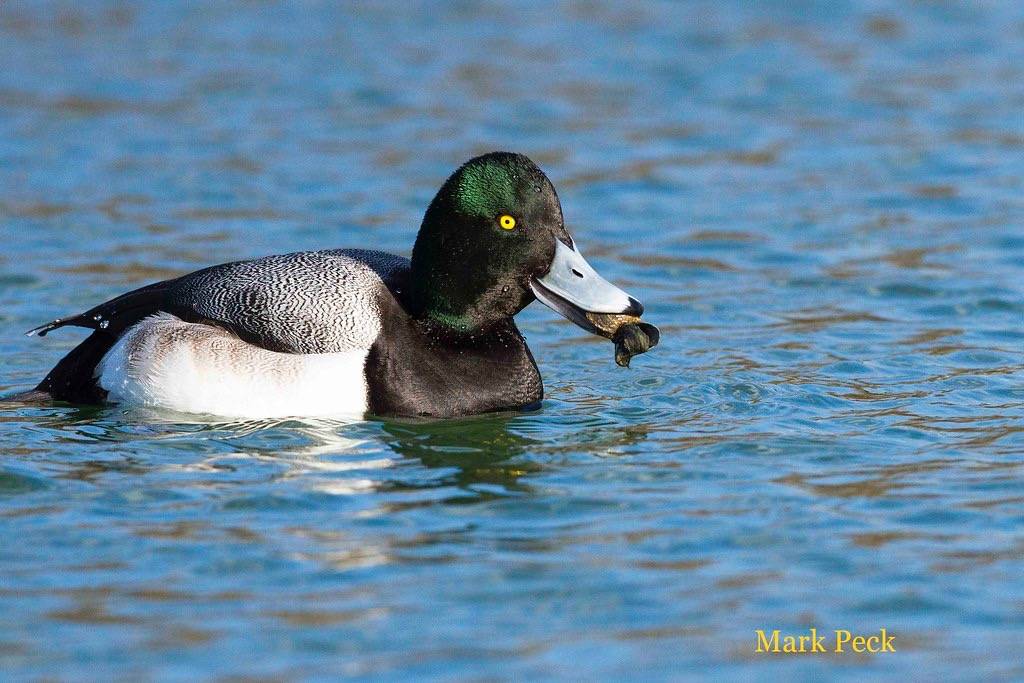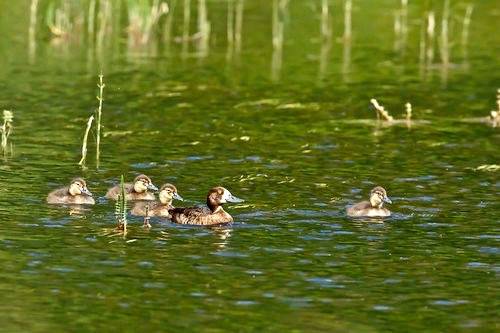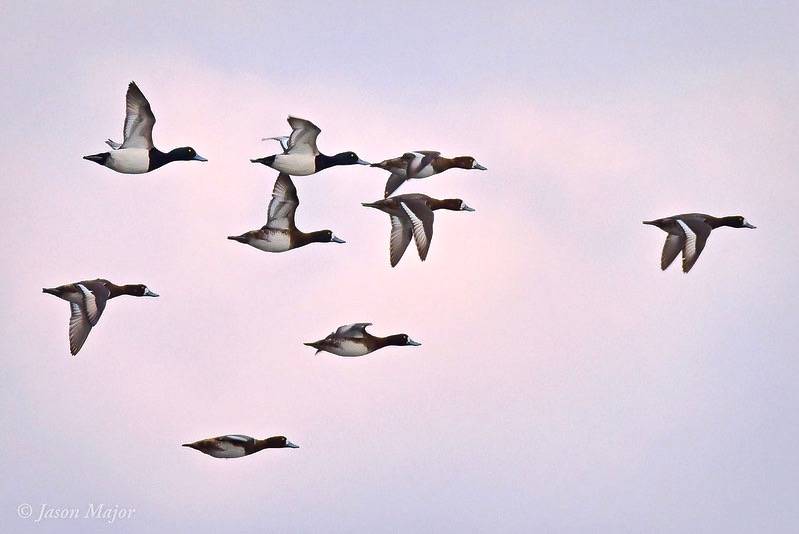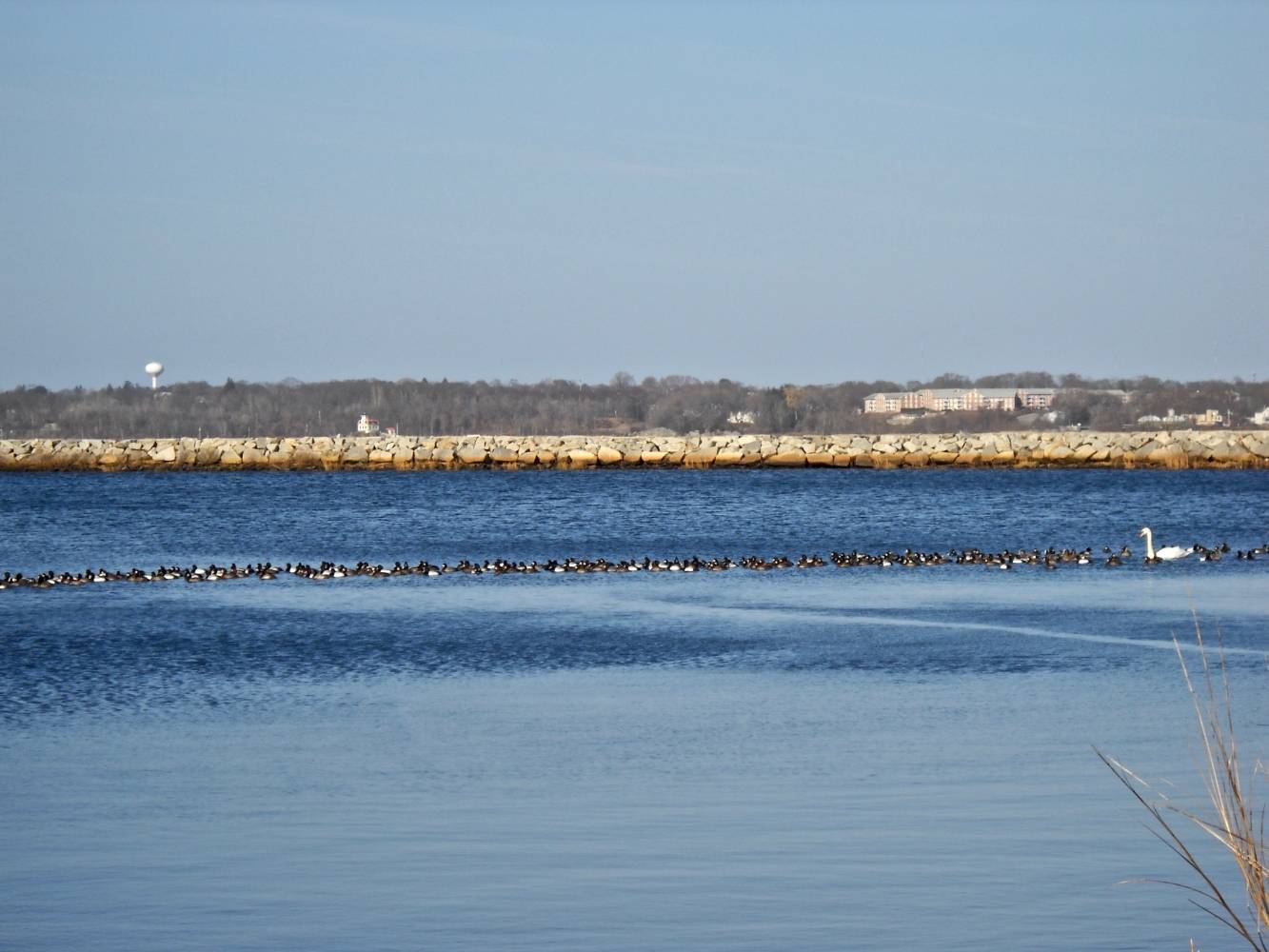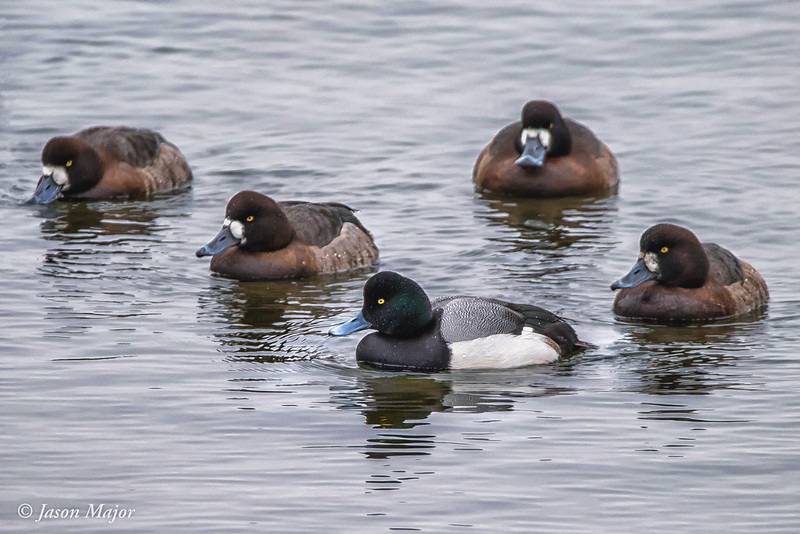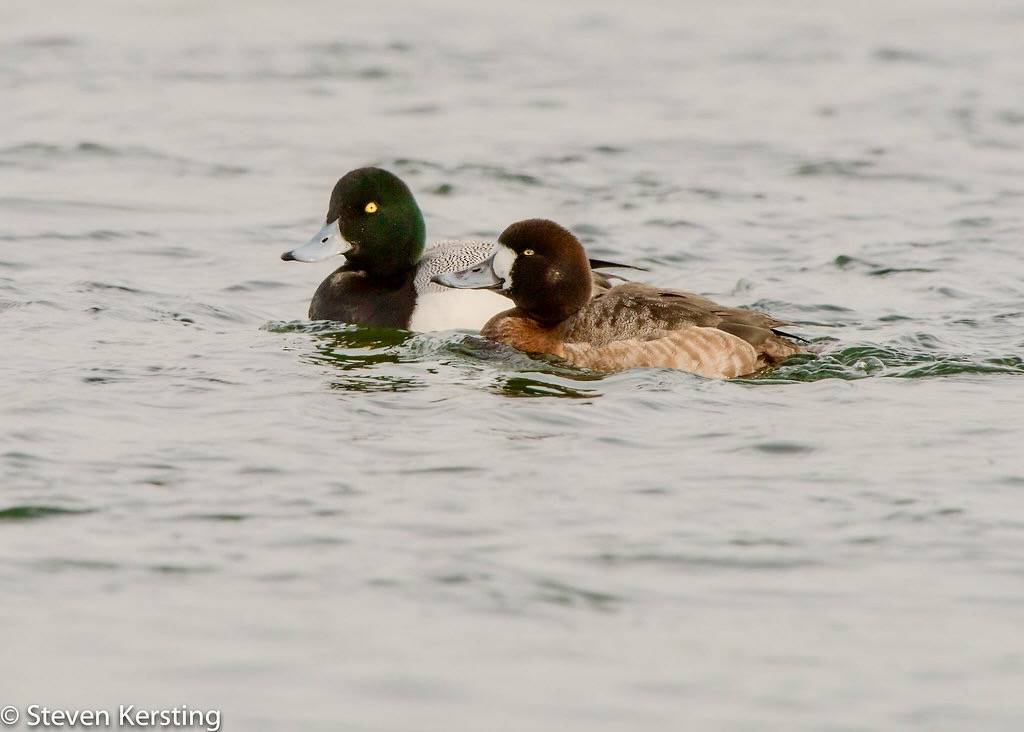Greater Scaup
Based on records since 2002, the Greater Scaup has been observed at Salter Grove during the colder months from late October through April. However, its occurrence is erratic from year to year--none were recorded in 2017-- and can range from a few individuals to several hundred within a span of days. Small groups of a few to several ducks may be hard to spot against the shoreline, but the long rafts of Scaups bobbing up and down in North Cove or the Providence River are easily visible from the boat launch, causeway and the breakwater.
Be aware that it is very difficult to distinguish between the Greater Scaup and the Lesser Scaup. Most of the Scaups seen in the park are probably Greaters because Lessers generally winter inland on large freshwater lakes. However, the first Lesser Scaup was reported in 2021 and then in 2022, so a closer look may be in order.
In profile, the Greater's head is rounded whereas the Lesser has an egg-shaped head with a peak towards the back of the head. The Greater has a larger black nail at the tip of its blue bill which is also wider than in the Lesser. The cross-hatched back feathers in the Greater Scaup stop at a white flank whereas they cover the flank down to the water line in the Lesser. In flight, the Greater has more white across its wing than the Lesser Scaup. When in doubt, experienced birders would record the sighting as "Greater/Lesser Scaup" on a birding checklist.
The Greater Scaup breeds in tundra across North America and Europe, spanning Alaska, northern Canada, northernmost Europe and Siberia. The North American populations winter along both the Atlantic (60-70% of individuals) and Pacific (20%) coasts and the remainder is found on inland freshwater bodies that remain ice-free. Pair formation occurs on the wintering grounds so courtship displays are common among wintering birds.
In recent decades, warming temperatures and an increase in contaminants like selenium, a heavy metal, or man-made chemicals like DDE and PCB in water bodies where they feed may be factors causing a population decline in this circumpolar diving duck. The Great Scaup feeds on aquatic invertebrates such as mollusks and crustaceans, some of which are filter feeders that concentrate and store harmful chemicals. In an attempt to reduce the negative impact of hunting in the midst of this population decline, the Fish and Wildlife Service monitors the abundance of Greater Scaups yearly to limit the number of individuals that hunters may take.
For more information:
https://www.allaboutbirds.org/guide/Greater_Scaup
https://www.audubon.org/field-guide/bird/greater-scaup
https://en.wikipedia.org/wiki/Greater_scaup
https://www.audubon.org/news/greater-or-lesser-scaup-here-are-biggest-differences-between-two
https://www.bsc-eoc.org/library/BWCfa06scauparticle.pdf

